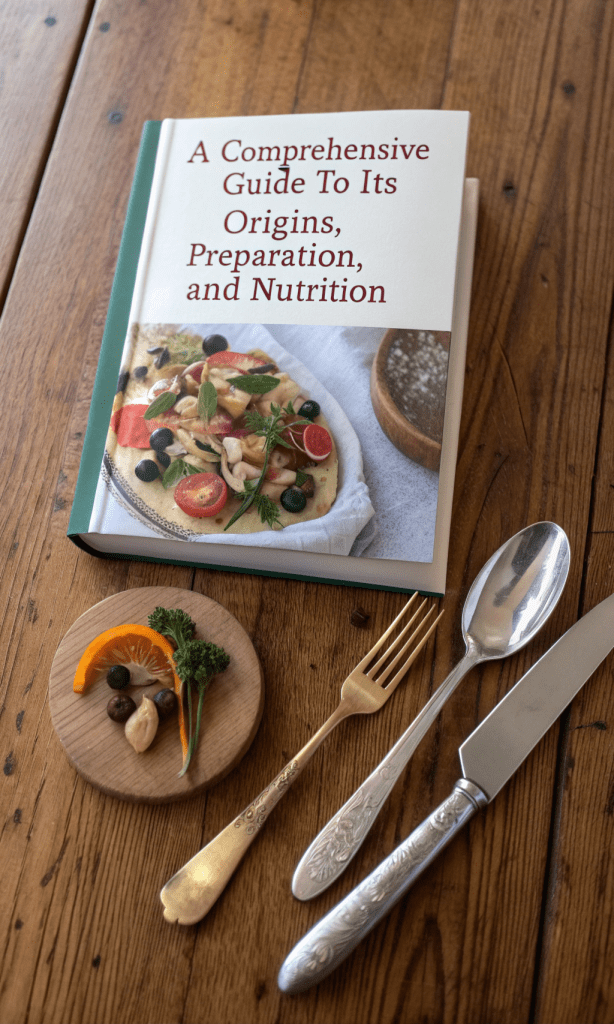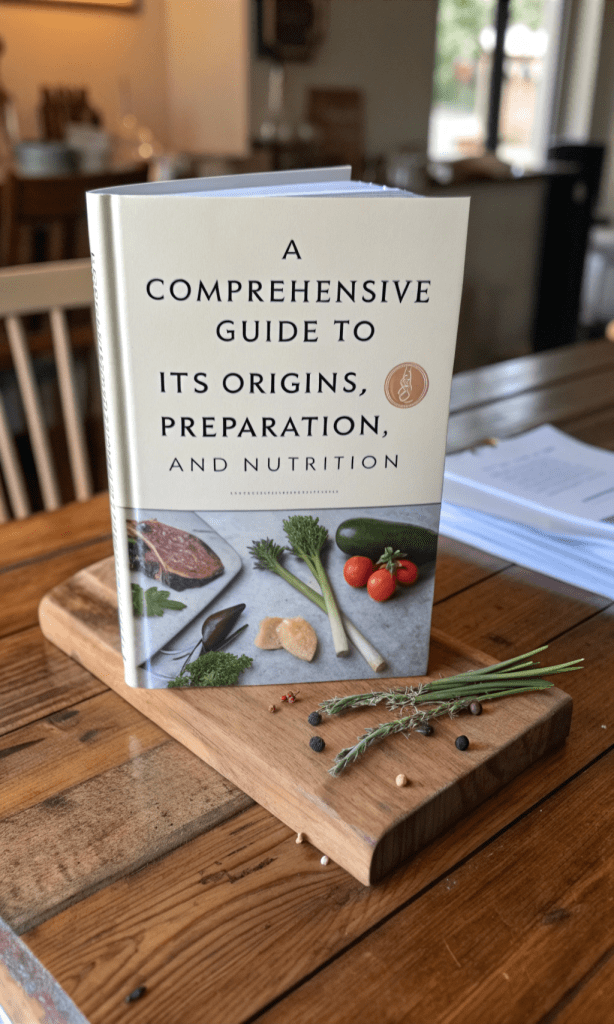
Food defines human existence, uniting cultures, fueling bodies, and sparking joy. This article explores what food is, where it comes from, how to prepare it, and its nutritional value. From ancient traditions to modern kitchens, food shapes our lives in countless ways. Let’s dive into the world of food, uncovering its history, preparation methods, and health benefits.
What Is Food?
Food encompasses any substance consumed to provide energy, nutrients, or sustenance. It includes plants, animals, fungi, and even microorganisms, prepared in endless ways to suit tastes and traditions. Food isn’t just fuel; it’s a cultural cornerstone, a source of comfort, and a creative outlet. From a simple apple to an elaborate sushi roll, food reflects humanity’s diversity and ingenuity.
The Origins of Food
Early Human Diets
Food’s story begins with our ancestors. Early humans were hunter-gatherers, relying on wild plants, fruits, nuts, and animals. Archaeological evidence from sites like Olduvai Gorge in Tanzania shows that Homo habilis, around 2.5 million years ago, used stone tools to butcher meat and process plants. This diet, rich in protein and fiber, supported brain development and survival.
Around 10,000 BCE, the Agricultural Revolution transformed food. In the Fertile Crescent, people domesticated wheat, barley, and animals like goats and sheep. This shift, seen in sites like Çatalhöyük in Turkey, allowed settled communities to thrive. Food became more predictable, leading to surplus and trade.
Regional Food Origins
Food varies by region, shaped by climate, geography, and culture. Rice, a staple for billions, originated in China’s Yangtze River valley around 7,000 years ago. Maize, central to Mesoamerican diets, was domesticated in Mexico around 5,000 BCE. Potatoes, now a global staple, trace back to the Andes in South America, cultivated by the Inca around 3,000 BCE.
Spices and trade further defined food’s evolution. The Silk Road spread ingredients like cinnamon and saffron across Asia and Europe. By the Middle Ages, food exchanges between continents—known as the Columbian Exchange—introduced tomatoes, peppers, and chocolate to Europe, while wheat and livestock reached the Americas.
Cultural Significance
Food carries deep cultural meaning. In India, curry reflects a blend of spices and traditions, with recipes varying by region. In Italy, pasta embodies family and heritage, with over 300 shapes tied to local customs. Food festivals, like Mexico’s Day of the Dead, celebrate life with dishes like tamales and pan de muerto. These traditions show how food binds communities across generations.
How to Prepare Food
Basic Cooking Techniques
Preparing food transforms raw ingredients into delicious, digestible meals. Here are key techniques every cook should know:
- Boiling: Submerging food in boiling water, ideal for pasta, rice, or vegetables. For example, boil potatoes for 15-20 minutes until fork-tender for a creamy mash.
- Baking: Cooking food in an oven with dry heat, perfect for bread, cakes, or casseroles. Bake a loaf of bread at 375°F for 30-40 minutes for a golden crust.
- Frying: Cooking in hot oil, either shallow (for eggs) or deep (for fries). Pan-fry chicken at 350°F for crispy, juicy results.
- Grilling: Cooking over an open flame or heat source, adding smoky flavor to meats and vegetables. Grill corn on the cob for 10 minutes, turning occasionally, for charred sweetness.
- Steaming: Using steam to cook food gently, preserving nutrients in vegetables like broccoli. Steam for 5-7 minutes for vibrant, crisp results.
Food Preparation Tips
- Plan Ahead: Choose recipes based on available ingredients and time. A weekly meal plan saves effort and reduces waste.
- Use Fresh Ingredients: Fresh produce enhances flavor and nutrition. Shop at local markets for seasonal items like tomatoes in summer or pumpkins in fall.
- Master Knife Skills: Dice onions or julienne carrots efficiently to speed up prep. A sharp chef’s knife makes clean, safe cuts.
- Season Thoughtfully: Balance salt, acid (like lemon juice), and spices to elevate dishes. Taste as you cook to adjust flavors.
- Practice Food Safety: Wash hands, clean surfaces, and cook meats to safe temperatures (e.g., chicken to 165°F) to prevent illness.
Sample Recipe: Classic Tomato Pasta
This simple dish showcases food’s ability to be both accessible and delicious.
Ingredients (Serves 4):
- 12 oz spaghetti
- 2 cups fresh tomatoes, diced
- 3 cloves garlic, minced
- 2 tbsp olive oil
- 1 tsp dried basil
- Salt and pepper to taste
- Grated Parmesan (optional)
Steps:
- Boil a pot of salted water and cook spaghetti until al dente, about 8-10 minutes.
- Heat olive oil in a skillet over medium heat. Add garlic and sauté for 1 minute until fragrant.
- Add diced tomatoes and basil. Cook for 5-7 minutes until tomatoes soften into a sauce.
- Season with salt and pepper. Toss cooked pasta in the sauce.
- Serve hot, topped with Parmesan if desired.
This recipe, rooted in Italian tradition, highlights how basic ingredients become extraordinary with proper technique.
Nutritional Value of Food
Macronutrients
Food provides three primary macronutrients:
- Carbohydrates: The body’s main energy source, found in grains, fruits, and vegetables. A cup of cooked rice offers about 45 grams of carbs, fueling daily activities.
- Proteins: Essential for growth and repair, found in meat, beans, and dairy. A 3-oz chicken breast provides 26 grams of protein, supporting muscle health.
- Fats: Vital for hormone production and nutrient absorption, found in oils, nuts, and avocados. A tablespoon of olive oil contains 14 grams of healthy fats.
Micronutrients
Food also delivers vitamins and minerals:
- Vitamin C: Boosts immunity, found in citrus fruits and bell peppers. One orange provides 70 mg, meeting daily needs.
- Calcium: Strengthens bones, abundant in dairy and leafy greens. A cup of milk offers 300 mg, about 30% of the daily requirement.
- Iron: Supports oxygen transport, found in red meat and spinach. A 3-oz serving of beef provides 2.7 mg, aiding energy levels.
Food Groups and Balance
A balanced diet includes all food groups:
- Vegetables: Rich in fiber and vitamins. Aim for 2-3 cups daily, like broccoli or carrots, to support digestion.
- Fruits: Provide antioxidants and natural sugars. Eat 1-2 cups daily, such as berries or apples, for heart health.
- Grains: Choose whole grains like quinoa or oats for sustained energy. Aim for 6-8 oz daily.
- Proteins: Include lean meats, fish, or legumes. Consume 5-6 oz daily for muscle maintenance.
- Dairy: Opt for low-fat options like yogurt for calcium. Aim for 3 cups daily.
The USDA’s MyPlate guide recommends filling half your plate with fruits and vegetables, a quarter with grains, and a quarter with protein, with dairy on the side.
Food and Health
Food directly impacts health. Diets high in processed foods, like sugary snacks or fast food, increase risks of obesity and heart disease. A 2020 study in The Lancet linked poor diets to 11 million deaths annually. Conversely, whole foods like fruits, vegetables, and lean proteins reduce chronic disease risk. The Mediterranean diet, rich in olive oil, fish, and vegetables, is linked to lower heart disease rates.
Portion control matters too. A single serving of pasta is about 1 cup cooked, not a heaping plate. Mindful eating—paying attention to hunger cues—helps maintain healthy weight and digestion.
Food’s Role in Modern Life
Sustainability and Food
Food production affects the environment. Agriculture uses 70% of global freshwater and contributes to 30% of greenhouse gas emissions, per the FAO. Choosing sustainable foods—like locally grown produce or plant-based proteins—reduces your carbon footprint. For example, lentils produce 43 times less emissions per kilogram than beef.
Food Trends
Modern food trends reflect changing values:
- Plant-Based Diets: Vegan and vegetarian diets are rising, driven by health and environmental concerns. A 2023 survey found 6% of Americans follow a plant-based diet.
- Farm-to-Table: Restaurants emphasize local, seasonal ingredients, supporting farmers and reducing transport emissions.
- Food Technology: Lab-grown meat and 3D-printed food are emerging, offering sustainable alternatives. Companies like Beyond Meat are mainstreaming plant-based proteins.

Food and Community
Food fosters connection. Family dinners, potlucks, and cultural festivals revolve around shared meals. In Japan, bento boxes prepared for loved ones symbolize care. In Ethiopia, injera is shared from a single plate, reinforcing community bonds. Food transcends language, bringing people together.
Practical Tips for Enjoying Food
- Explore New Cuisines: Try making Thai curry or Ethiopian doro wat to expand your palate.
- Cook with Others: Involve family or friends in meal prep to make it fun and social.
- Experiment with Spices: Add cumin or turmeric to dishes for bold flavors and health benefits.
- Grow Your Own Food: Start a small herb garden or grow tomatoes to connect with food’s source.
- Mindful Eating: Savor each bite, eat slowly, and avoid distractions to enhance enjoyment.
Food is more than sustenance—it’s a bridge to history, culture, and health. From its origins in ancient fields to modern kitchens, food shapes our world. Preparing it with care, understanding its nutritional value, and embracing its diversity enriches our lives. Whether you’re grilling vegetables or baking bread, food invites creativity and connection. Celebrate it daily, and let it nourish both body and soul.

